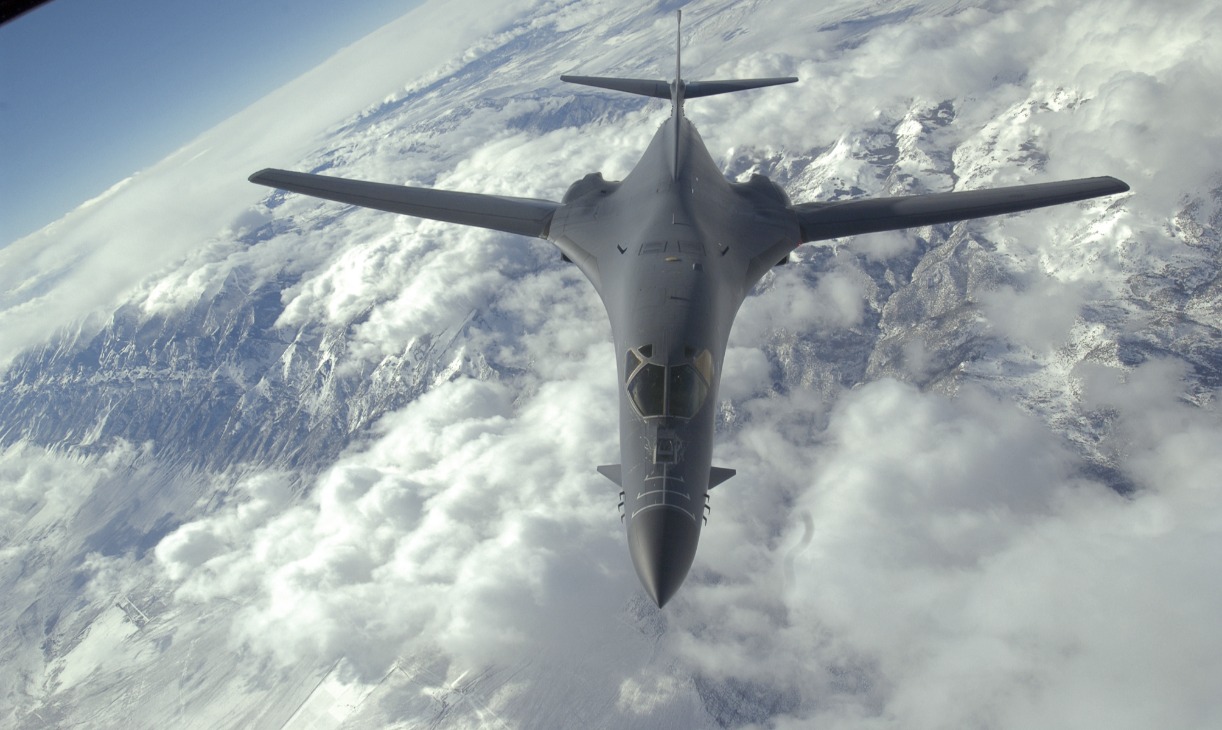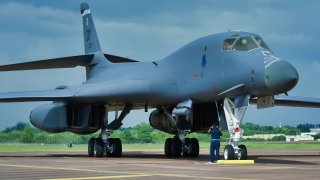Air Force Keeps Pulling Old B-1B Bombers Out of the 'Boneyard'
The U.S. Air Force has reactivated another B-1B Lancer, nicknamed "Rage," from the "Boneyard" at Davis-Monthan AFB, Arizona. This aircraft, initially retired and preserved in Type 2000 storage, was brought back to replace a damaged B-1B.
All You Need to Know: The U.S. Air Force’s fleet of B-1B Lancer bombers is shrinking, with fewer than 50 remaining in service. However, some retired bombers are being resurrected from the “Boneyard” at Davis-Monthan AFB, including aircraft nicknamed “Lancelot” and “Rage.”

-These bombers were pulled from storage after other Lancers suffered engine failures. Congress has mandated a fleet of 45 B-1Bs until the B-21 Raider enters service, prompting the Air Force to refurbish B-1s in reclaimable condition.
-As the aging fleet faces setbacks, further restorations may be needed to maintain operational readiness until the B-21 becomes available.
With the B-21 Raider Still Years Away, B-1B Lancers Make a Comeback
The United States Air Force's fleet of Rockwell B-1 Lancer bombers has slowly been retired from service. There are fewer than 50 of the Cold War long-range strategic bombers in service, down from its original 100. In 2021, the fleet saw 17 bombers retired – but due to a few incidents, there have been occasions where some of the old Bones sent to the infamous "Boneyard" have returned to service.
That included the aircraft nicknamed "Lancelot," which was selected earlier this year to replace a B-1 Lancer that was damaged beyond repair after suffering an engine mishap during otherwise "routine" maintenance at Dyess Air Force Base (AFB), Texas in April 2022. The B-1 was flown to Tinker AFB, Oklahoma, to complete the regeneration process.
It was reported last month that another B-1B Lancer – nicknamed "Rage" – has also been resurrected. That aircraft, serial number 86-0115, was one of the original four out of the 17 retired bombers deemed to be maintained "in a reclaimable condition" so that they could be refurbished and returned to service. It was recently spotted flying at Davis-Monthan AFB in Tucson, Arizona. The base is home to the 309th Aerospace Maintenance and Regeneration Group (AMARG), the unit that manages the Department of Defense's (DoD's) Boneyard of aircraft.
Congress has mandated that the service maintains a fleet of 45 B-1Bs – which will remain in service until the Northrop Grumman B-21 Raider enters service in the coming decade.
Preserved Aircraft
Aircraft preserved at the Boneyard in reclaimable condition aren't simply left to soak in the sun. Each of the B-1s was maintained in Type 2000 storage, one level below the flyable Type 1000 storage. This entails the aircraft being covered with a silicone-like sealant, which covers gaps, engines, and all glass.

The aircraft nicknamed Rage was pulled from storage after another B-1B Lancer with the 7th Bomb Wing also experienced a fire engine failure. As the projected repairs were deemed "cost-prohibitive," the decision was made to regenerate one of the four B-1s.
As reported by The Aviationist, the Rage will still need a bit of TLC, and "will undergo depot-level maintenance to incorporate missed upgrades from its retirement years and perform a thorough check of the airframe and avionics before returning to a frontline unit."
Another B-1B to Be Restored
The AMARG should expect to have its hands full, as it is almost certain that the unit will need to pull one of the remaining two B-1Bs in reclaimable condition and prepare it for restoration. Though the Air Force hasn't announced whether B-1B 85-0085 "Ruptured Duck," which crashed at Ellsworth AFB, South Dakota, on January 4 of this year, will return to service – it now seems highly unlikely.
There are currently no regeneration efforts – at least none that have been announced – but it would be hard to believe that the aptly named "Ruptured Duck" will fly again. Perhaps the Air Force should have the AMARG look at those lucky 13 B-1s that aren't in Type 2000 storage and consider ensuring that there will be enough B-1s that can actually take to the skies while the B-21 Raider program comes online.
Author Experience and Expertise: Peter Suciu, Defense Expert
Peter Suciu is a Michigan-based writer. He has contributed to more than four dozen magazines, newspapers, and websites with over 3,200 published pieces over a twenty-year career in journalism. He regularly writes about military hardware, firearms history, cybersecurity, politics, and international affairs. Peter is also a Contributing Writer for Forbes and Clearance Jobs. You can follow him on Twitter: @PeterSuciu. You can email the author: [email protected].
Image Credit: U.S. Air Force.


